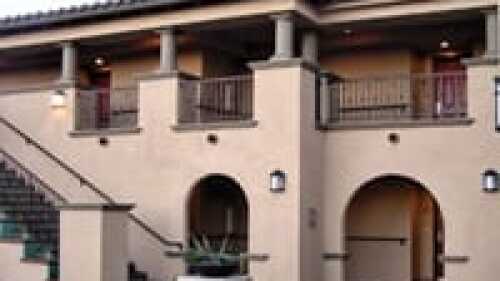Patrick M. Condon Island Press 1718 Connecticut Avenue, NW, Washington, DC 20009 www.islandpress.org .2010. 200 pages. $30, paperback.
On first blush, Seven Rules for Sustainable Communities might appear to be just a rehash of the same old sustainability arguments compressed into seven rules for sustainable community design—old wine in new bottles. But do not be fooled by the title.
Underlying the seemingly simple rules is a radical proposal to replace familiar hub-and-spoke transit systems focused on central business districts with transit networks utilizing existing commercial strips along arterial streets. The author argues that the linear public space generated by the streetcar lines that shaped early North American cities should be recognized and resuscitated as the armature for the 21st-century walkable city.
Patrick Condon is a chaired professor at the University of British Columbia’s School of Architecture and Landscape Architecture. He draws on his familiarity with urban design and city building in Vancouver, as well as his comprehensive review of the urban form and planning literature, to back up his recommendations with a wealth of research findings and experience.
Rule number one is to “restore the streetcar city"—that is, the city that concentrated housing, jobs, and services in a web defined by streetcar lines that served the whole urban area. Under this rule, those much-maligned commercial strips are seen as opportunity areas rather than urban blight; in fact, he writes, “commercial strips are your friend.”
Condon shows that contemporary efforts to reconcentrate employment and civic life in central business districts have had limited success. Meanwhile, close to half of U.S. and Canadian urban residents live in districts once served by streetcars. And most of these districts are still pedestrian- and transit-friendly even after the removal of their streetcar lines.
Thus, while few of us live within a five-minute walk of a downtown or node, most of us do live within a reasonable walk of a corridor, “however gruesome it may be now,” the book says. These corridors are where most transit trips originate, and where most jobs and commercial services are located.
To take advantage of this existing pattern, Condon believes we should adopt a transit strategy that facilitates short trips using zero-carbon vehicles such as at-grade trolley buses and streetcars running along arterial corridors instead of grade-separated heavy- and light-rail systems that only get users to traditional downtowns and hubs.
Condon’s ideas challenge the conventional wisdom. So far, Portland, Oregon, is the only U.S. city that has made a serious effort to restore its streetcar lines, using a modern European system that can be installed for 20 percent the per-mile cost of its light-rail system.
Most metropolitan regions, such as Minneapolis, Houston, and Denver, have adopted the hub-and-spoke concept, spending billions on systems designed to get users to traditional downtowns. To get access in other directions, however, requires using cars on freeway ring roads. Meanwhile, the average vehicle-miles traveled per day and the greenhouse gas emissions in such cities steadily increase.
Sustainable cities obviously depend on more than transit, but successful transit can channel a host of other investments into desirable urban forms. With the proper regulations and incentives to reinforce transit patterns, blighted commercial strips could be redeveloped by adding new services, jobs, diverse housing, and civic uses.
The other six rules for sustainable communities are more familiar and less radical; many are also found in Leadership in Energy and Environmental Design (LEED) for Neighborhood Development standards. Who could argue with an interconnected street system, commercial services, transit and schools within a five-minute walk, and good jobs located close to affordable homes? Or with diverse housing types, linked systems of natural areas and parks, and greener and smarter infrastructure?
But Condon does not simply state these rules; he follows each with practical implementation guides. For example, he shows how to achieve diverse housing types by changing zoning to allow for varying parcel sizes, tenure types, building heights, and land use mixes.
This is an attractive and thought-provoking book. Its two-column layout is readable, its well-organized text is illustrated with great photos and figures, and its interesting arguments are supported with extensive research citations. It would be hard to find a better source of design strategies for the post-carbon world


